Student Designs & Related Events
ART (WEAR) OFF THE WALL
For this project, Textile and Apparel Management students in Creativity and Problem Solving (TAM 4480) were asked to create a textile art piece intended to hang on a wall, but that can also be worn. This year their beginning inspiration and story was the Endangered: Fauna and Fashion exhibit, with freedom to choose the focus of their creative research. Surface design was critical to create the visual 2D interest as wall art, but the ability to interact with the 3D body was also important. Texture and dimensionality could also be used as part of the 2D work. Each student chose a different aspect of sustainability in the animal world, with some even addressing the complicated nature of the balance among different communities.
Continue below to view student designs and additional exhibition-related events. Return to the Endangered: Fauna and Fashion Exhibition.
Bluefin Tuna
by Andrea Radicic
I was first drawn to the Bluefish Tuna for its iridescent scales and unique form. I imagined a fish swimming swiftly through the vast, blue ocean— Its scales moving through the current, being reflected by glimpses of light through the water. I thought of creating a garment that was beautifully colored, mimicking this iridescence, and the texture of the scales. The fabric was hand dyed in a shade to respond to the yellow of the tuna’s fins. I hand-beaded abstract details over the front and wrap pieces. I thought this added visual interest, was appealing and could resemble scales and iridescence, which is why I chose the beads in clear and blue. When folded into a flat form it resembles a fish; when worn, it creates a body-wrapped piece with extended fins.

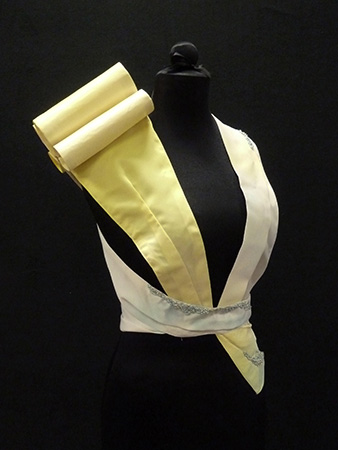

Inside Look
by Evan Scherder
What were the last food items on your grocery list? Chances are a bee had a part in pollinating the plant that you will eat or that an animal will eat. In fact, according to an article from BBC iWonder, bees are responsible for 1/3 of food pollination. Honeybees, originally imported from Europe, have been raised by beekeepers in order to produce honey and keep pace with our agricultural yields. Yet, it’s not only honeybees we should be concerned about. A story on the NPR Weekend Edition Sunday pointed out there are thousands of wild bee species that play an equally vital role in ecosystems and pollinating flowering plants. A healthy environment needs healthy bees, and it is our responsibility to guard these creatures. One day, their future could be our future.
Robert Krulwich for NPR quoted Charles Darwin: “The honeycomb is a masterpiece of engineering, it is absolutely perfect in economizing labor and wax.” Hexagons are found throughout nature but most commonly associated with bees. When it comes to their home, bees are perfectionists, and it was their home that inspired my piece Inside Look. The fabric’s shape was created by connecting hexagons side by side. On the wall, the piece opens to display a vibrant image of a honeycomb with marigolds and bees digitally printed onto silk crepe. When taken off the wall the reverse side is a soft black matte satin overlaid with a gold nylon net of hexagons. It is meant to showcase the beauty and utility these insects provide in our everyday life.
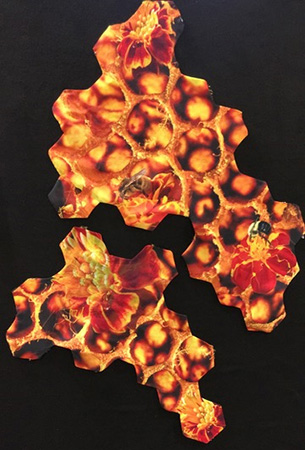
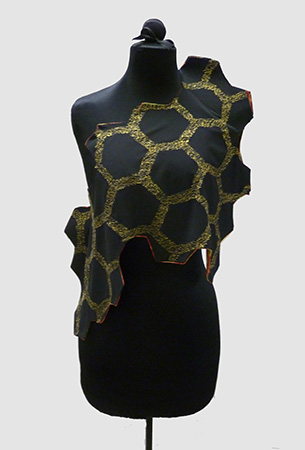
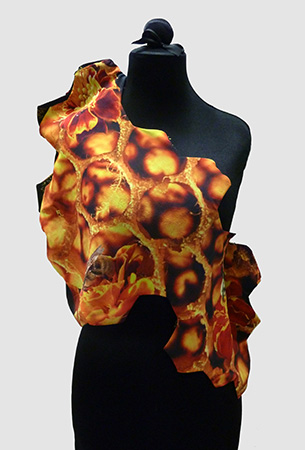
Caught In Between
by Rylie Bryant
Caught in Between focuses on the controversy between hunting and conservation. The hexagonal spiral shape represents the argument as it goes around and around. The garment has been dyed a cool grey in order to represent that this topic is not a black and white issue. The purpose of this art piece/garment is to make the viewer think about where they stand on the issue and the opinion of the other side. The sleeves of the garment make the wearer feel trapped inside, they are torn in both directions of the argument. The inspiration for this garment is from the quote “Without hunting there would be no conservation; without conservation, there would be no wildlife” by Rob Keck.
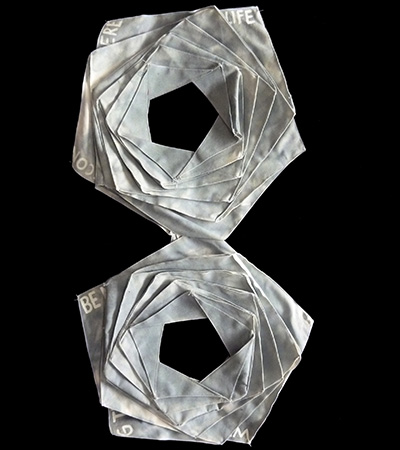

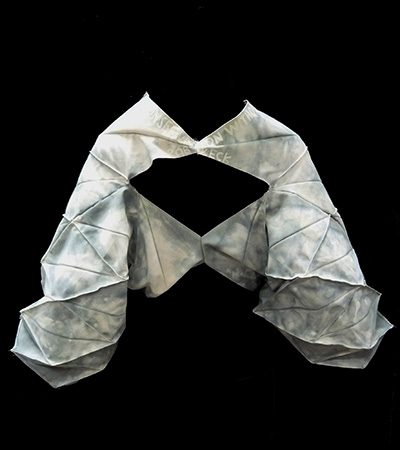
Tangled
by Stephanie Roombos
The purpose for this design project is to demonstrate why green turtles are an endangered species. Green turtles, one of the largest sea turtles and the only herbivore among all of the species, are found in tropical and subtropical waters, where they are endangered by many ways including being caught in fishing gear. All over the world, hundreds of thousands of seas turtles are accidentally caught up in shrimp trawl nets, fishing gillnets and longline hooks. New research shows that attaching green LED lights to fishing nets can prevent turtles from accidentally being entangled. This inspiration led me to create a piece that shows the two roles of the human and the turtle. When the piece is flat on the wall, it will look like the turtle is trapped on the wall. Once it is off the wall, the materials look like it is trapping the human and not the green turtle. I also incorporated the green color to represent the LED lights. This is intended to bring attention to the plight of the turtles.

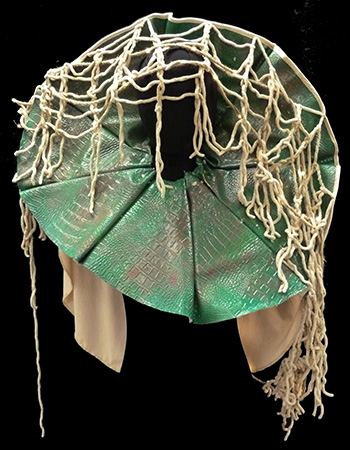
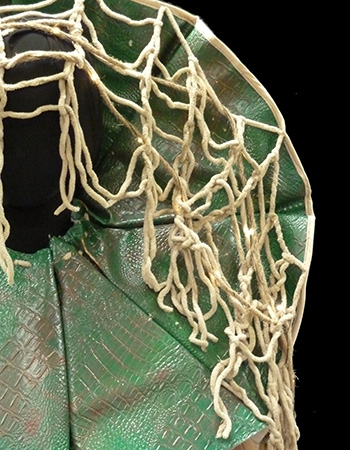
Which Is More Important?
by Qi Lin
Over the past 50 years cities and suburbs have been growing rapidly; at the same time, forcing wildlife to leave their native habitat and relocate. However, due to biological diversity, climate, species distribution, and habitat threats, many species either die out or become critically endangered. According to Harvard biologist E. O. Wilson, “30,000 species per year (or three species per hour) are being driven to extinction.” The concept of my design is to remind people of the often conflicting relationship between nature (wildlife) and cities (mankind)?
My initial idea came through experimentation with paper origami. The unique shape of the origami intrigued me so I started looking at it through different angles. I realized, when looking at different angles, some parts are shown while some are hidden. I wanted to use origami to express my feelings toward the question “Which is more important?” because I believe both human and wildlife are important. No doubt urban expansion will push animals out of their habitat, especially birds. However, living in a city makes our life much more convenient and easier than ever before. It is really hard to argue whether expanding urbanization is the right choice or not. I made a few modifications on my original design to achieve my purpose. The front is protruded in an angle that represents a bird’s beak. The back cape looks like a bird’s wing and creates movement while spinning. I created a digital print with the top ten endangered bird species in America, along with other birds to represent the beauty of birds. When the garment is folded, one can see the landscape of New York City. New York City is one of the most populous, well-developed cities in the world, in a manner representing the wisdom and intelligence of mankind. I combined the city and the birds together in order to emphasize the dilemma between nature and the city.
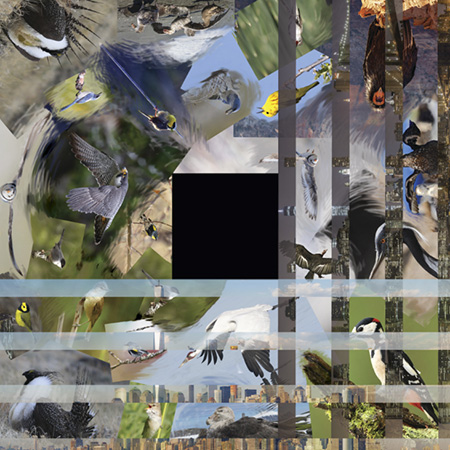

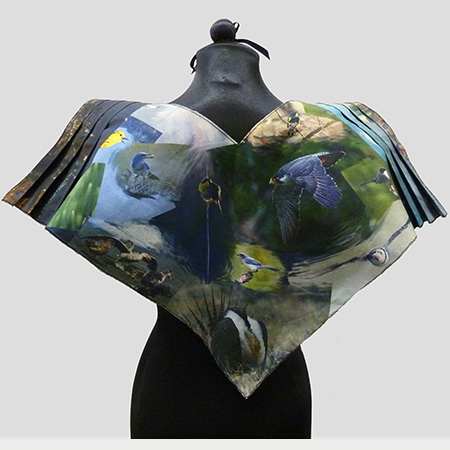
Unintended Consequence
by Andrea Bilgrien
My inspiration was endangered birds, particularly birds of prey or raptors. I focused on what is harming these animals and driving them to endangerment. Healthy birds of prey have few natural predators; however, humans have created many problems that kill these birds in staggering numbers. I learned that poisoning is one of the main threats to raptors. Humans have been indirectly poisoning birds of prey while hunting and through attempts to control pests. Pesticides and insecticides used to protect crops directly contaminate the birds’ food sources. Similar contamination occurs when humans shoot other creatures (hunting or controlling pests) with lead bullets. The resulting carcasses or injured animals are a main food source for birds of prey, which in turn get lead poisoning, eventually resulting in death. The endangerment of these animals is completely avoidable and only perpetuated by human ignorance.
By trying to control part of an ecosystem, humans are unintentionally throwing off the balance of nature. For my project I wanted to focus on birds of prey as they should be, if we can become more conscious of the creatures with whom we share the planet. I want to capture the strength and grace of birds of prey on the hunt for my piece as a wall hanging. Using a core inspiration of flight, a key strength of these predators, I intend to recreate their form on the wall with hand-painted surface detail. Representations of the colors and texture of feathers is hand painted on linen canvas. When taken off the wall and put on a human form, I want it to convey a level of homogeneity between humans and the rest of the natural world.
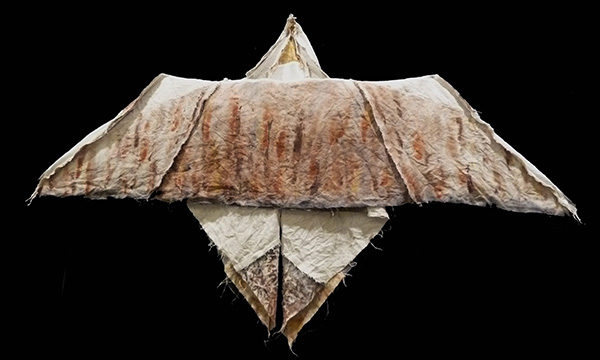
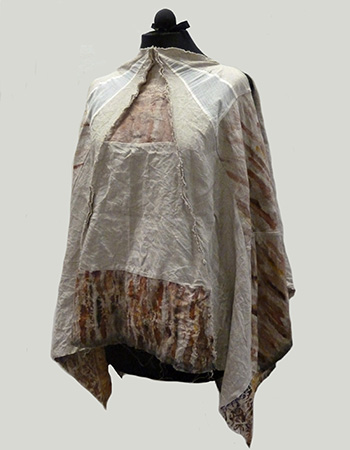
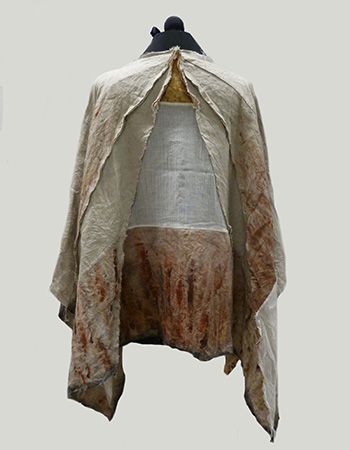
The Endangered African Penguin
by Marisa Gannon
The African Penguin, occasionally referred to as the Jackass Penguin because of their call which is similar to that of a donkey, are located near the southwestern coast of Africa. They are the only species of penguins that inhabit these coasts in various sized colonies who enjoy the majority of their life at sea. Research conducted by BirdLife International proclaims that the African Penguin population has crashed fifty percent in the past thirty years. Additional threats to the endangered animals were caused by two major oil spills. These environmental tragedies killed 30,000 penguins. In 2015 researchers stated that the population of penguin pairs plunged from 150,000 to 900. Despite successful rehabilitation programs and volunteers, the oil spills have created physiological and behavioral problems. BirdLife is led to believe that the effects of the oil have disturbed major lifestyle patterns due to environmental damage and extensive captivities. This art piece showcases the Island of St. Croix in South Africa. The pattern of the overall fabric was created by a marbling technique to resemble the pattern of the oil in the affected bodies of water. The black, crepe-back satin sections form the shapes of oil covering penguin feathers, geographically placed to portray the penguin’s colony locations that were affected, and the rehabilitation facilities where they were rescued.
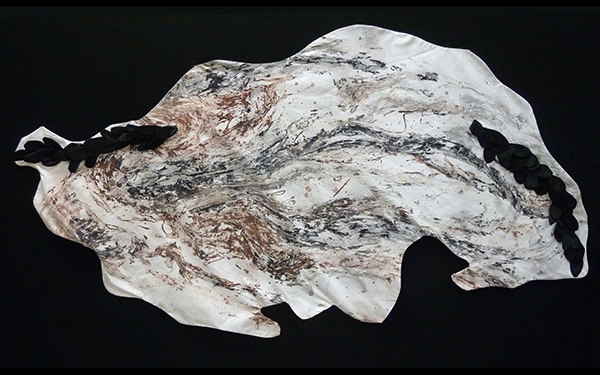

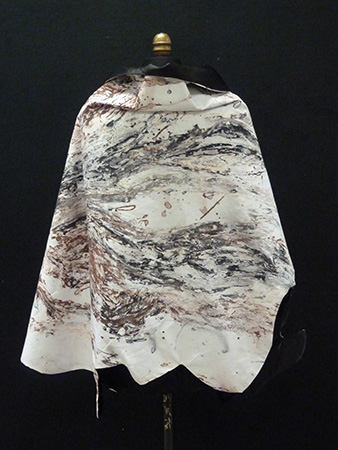
King
by Sarah Bukich
My design emphasizes the endangerment of tigers and how their lives are destroyed by humans. When worn on the body, the triangular shape represents different aspects such as mountains, the animal food chain and sharpness of a tiger’s teeth and claws. The reverse fabric, digitally designed and printed on silk, includes images of mountains, water, forests and rocky areas to show the tiger’s natural habitat. The claw marks cut out on the printed area represent tigers being ripped from their homes. When the fabric is turned inside out and placed on the wall, the Chinese symbol for tiger -“King” – is center front. This symbol also appears as a mark on the tiger’s forehead, viewable even when the fur is shaved. The symbol represents bravery and power and I want to showcase that tigers are beautiful creatures and they should not be disturbed in their natural habitats.
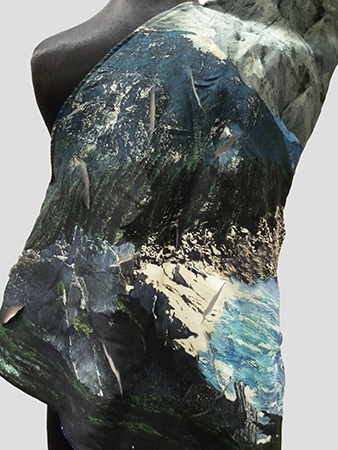


Lupine on Fire
by Lovell Cox
I based my artwork on the Karner Blue Butterfly. When researching endangered butterflies I saw the Karner Blue Butterfly is one of the twenty-four butterflies on the endangered list. They also have a unique wing design and color. Karner Blue Butterflies start their lives with the help of the blue lupine wild prairie flower. Due to deforestation this plant has started to deteriorate in northern America leaving the Karner blue butterfly nowhere to hatch or to feed.
Through my artwork I displayed how deforestation is killing the beautiful Karner blue butterfly. When my artwork is on the wall the wings span out and on the front of the wings the red fading into blue represents the lupine flower getting destroyed by fire. I also incorporated exaggerated shoulder pads and made them look like eyes. In the front of the design I incorporated a plain design to represent the antlers of the butterfly. The emphasis is primarily on the back of the garment by showing one view only of their beautiful wings and then when the arms are raised it is shown as an artwork, as you can see between the wings the fire on the blue lupine prairie flower.
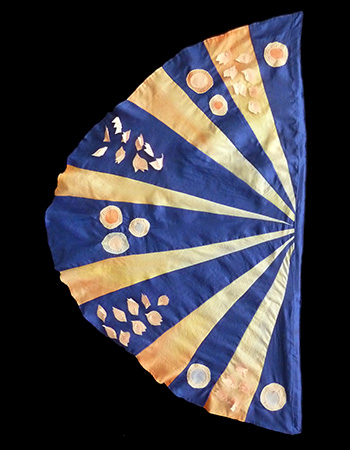

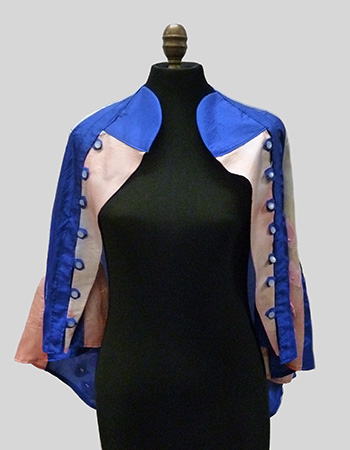
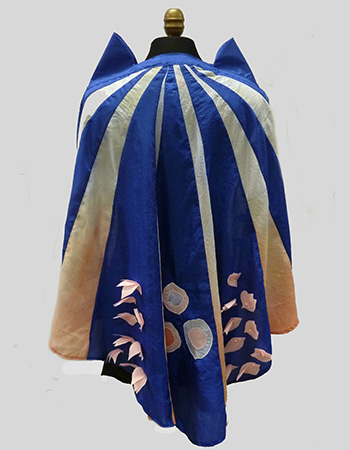
Northern Spotted Owl
by Alana Jacobson
I decided to draw inspiration from the Northern Spotted Owl which is indigenous to the west coast of America where their habitats include Douglas fir trees and other old growth forests, most of which have been greatly destroyed by timber harvesting. My design is an openly draped top with colors and patterns reflecting the feathers of the owl. Around the neckline is a detachable ruff collar, mimicking the beautiful folds and ruffles on the chest and neck of the Northern Spotted Owl. With my design I focus more on celebrating the owl and its beauty, hopefully to inspire others to want to protect them and other birds threatened by our actions.

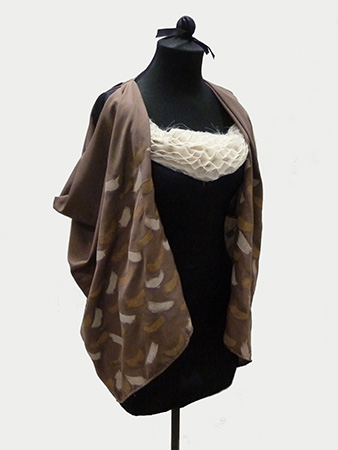

Goura Victoria
by Brianna Moore
Many species are endangered or extinct due to humans tampering with their environments. After researching endangered species I came across the Victoria Crowned Pigeon. Atop its head there are many quills, with crest-like shapes at the ends. This bird has pretty shades of blue on its feathers accented with white, black and grey. It has a bright red chest and deep red eyes that stand out from the rest of its body. The Victoria Crowned Pigeon lives in the New Guinea region within sago forests which consist of many palm trees used for shelter. Unfortunately, these bird’s homes are undergoing deforestation, which ultimately is killing them. My art piece is digitally designed and printed to reflect the beauty of the birds by using its colors and features. When it lays flat it resembles the shape of a bird in flight. There are silhouettes of palm trees to bring awareness to the fact that their homes are being destroyed and that we as humans need to be mindful of all species on the planet.
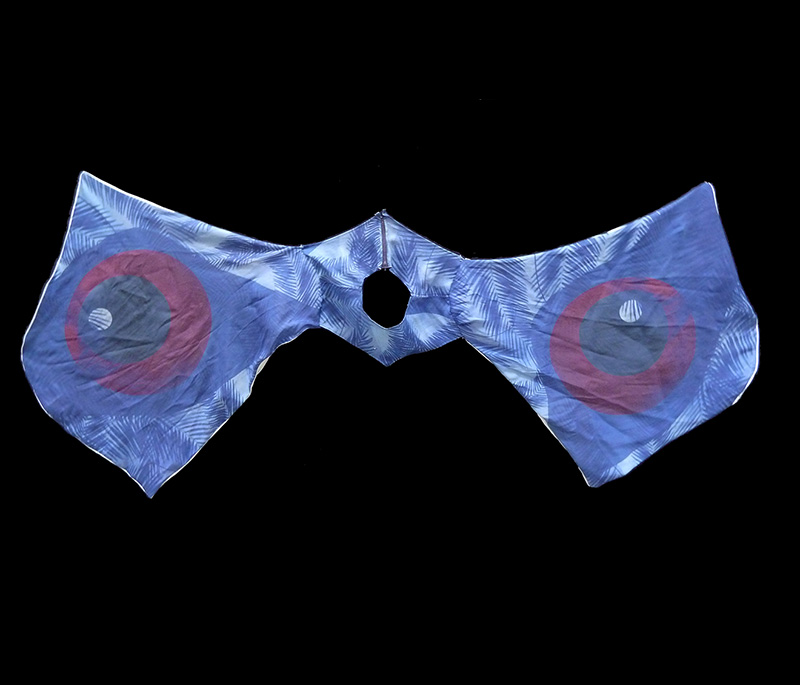
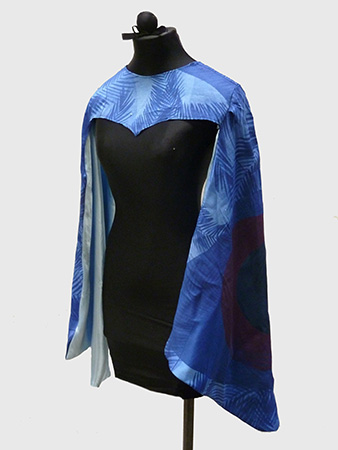
Secret Invasion
by Darien Lee
My primary inspiration was the Lionfish. Lionfish are an aggressive breed of fish native to the Indo-Pacific, but are an invasive species in the Atlantic Ocean. Invasive species can cause extreme changes within ecosystems they don’t belong in, including mass extinction and shifting ecosystem dynamics. I was inspired by the tentacle-like nature of the fins and by the animal’s impact on non-native environments. My piece is created from white, to show the purity and balance of the ecosystems form; however, when the back of the design is opened, one can see the damage actually occurring under the mask of unity and equilibrium: Lionfish came out of nowhere and suddenly begin to destroy their new ecosystem.
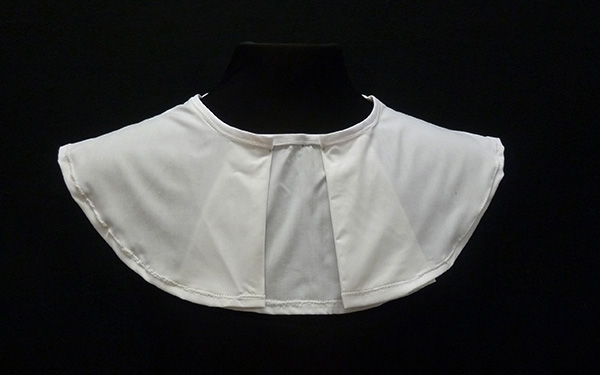
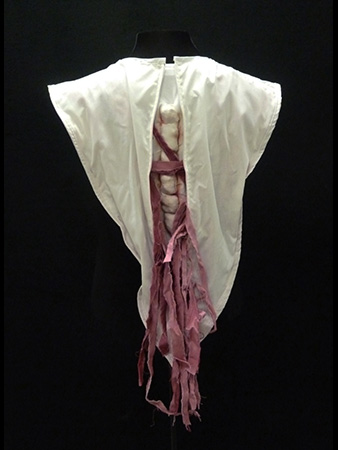
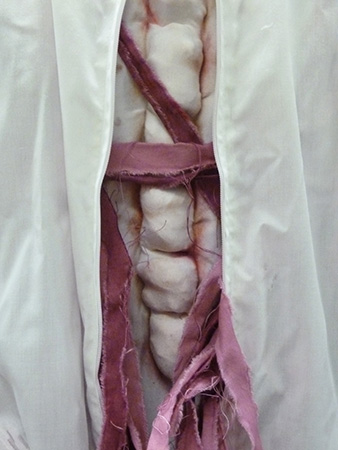
RECEPTION, PRESENTATION AND POP-UP EXHIBITION
The MHCTC exhibited over thirty-five artifacts in the Nicholas and Abigail Filippello Exhibition Showcase in Gwynn Hall on the University of Missouri campus. An additional twenty-five artifacts were featured in the popup exhibition in Memorial Union prior to the afternoon’s presentation by Missouri Department of Conservation representatives Brian Flowers and Emily Porter who highlighted Missouri’s integral role in North America’s 18th century fur trade, as well as the state’s unique, citizen-based methods of conserving animal populations.









Return to Endangered: Fauna and Fashion homepage
Return to Origins: Dress and Textiles homepage